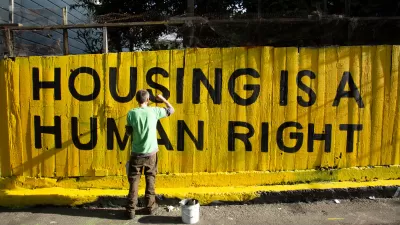Health care advice can often be given through video or teleconferencing, which saves a great deal of time and money, but most patients still aren't eager to do it.

More and more employers, hoping to offer attractive benefits and save money, now have telemedicine plans. These allow patients to consult a doctor over the phone or through a video conference without the expense or trouble of meeting the doctor in person. For common issues like strep throat, a patient might get a diagnosis, prescription, and start treatment much more quickly using telemedicine than going through the traditional face-to-face interaction. So why aren't teledocs more popular?
According to a Chicago Tribune article by Lisa Schencker, it's not because employers aren't interested. They can see the potential, "If it catches on broadly with consumers, telemedicine could change the face of health care, altering the relationship between doctors and patients seeking relief from common maladies." Perhaps, more importantly, they can see the potential savings. A healthier workforce is more productive and if employees use telemedicine, there are potential savings over in-person visits.
Schencker points out some of the reasons patients are being slow to adopt telemedice, "a lack of awareness, though, may not be the only obstacle for companies to overcome. Employees may wonder whether a doctor can accurately diagnose them without seeing them in person."
In the same way that telecommuting didn't live up to the hype, this seems to be another example of experts underestimating the importance of where we live and the persistence of our need for in-person services in medicine and all fields of human endeavor. Thomas Friedman's Flat World seems to be getting increasingly spikey.
FULL STORY: More employers are offering telemedicine, but why aren't workers using it?

Trump Administration Could Effectively End Housing Voucher Program
Federal officials are eyeing major cuts to the Section 8 program that helps millions of low-income households pay rent.

Planetizen Federal Action Tracker
A weekly monitor of how Trump’s orders and actions are impacting planners and planning in America.

Ken Jennings Launches Transit Web Series
The Jeopardy champ wants you to ride public transit.

Philadelphia Is Expanding its Network of Roundabouts
Roundabouts are widely shown to decrease traffic speed, reduce congestion, and improve efficiency.

Why Bike Lanes Are Good: An Explainer for the US Transportation Secretary
Sean Duffy says there’s no evidence that bike lanes have benefits. Streetsblog — and federal agencies’ own data — beg to differ.

California Invests Additional $5M in Electric School Buses
The state wants to electrify all of its school bus fleets by 2035.
Urban Design for Planners 1: Software Tools
This six-course series explores essential urban design concepts using open source software and equips planners with the tools they need to participate fully in the urban design process.
Planning for Universal Design
Learn the tools for implementing Universal Design in planning regulations.
Ada County Highway District
Clanton & Associates, Inc.
Jessamine County Fiscal Court
Institute for Housing and Urban Development Studies (IHS)
City of Grandview
Harvard GSD Executive Education
Toledo-Lucas County Plan Commissions
Salt Lake City
NYU Wagner Graduate School of Public Service





























